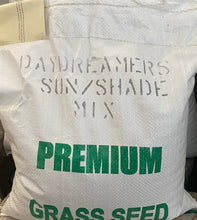Sun/Shade Blend
34% CR. RED FESCUE
33% KY. BLUEGRASS
33% TURF TYPE PER. RYE.
Sunny Blend
20% KY. BLUEGRASS
20% CR. RED FESCUE
20% TURF TYPE PER. RYE.
20% TURF TYPE PER. RYE.
10% ELITE KY. BLUE
10% ELITE KY. BLUE
When To Plant Grass Seeds In Michigan
It’s no secret that Michigan has harsh winters. The ideal time to plant grass seed is in early fall or late summer. This gives the grass seed enough time to begin putting roots down while still being protected from the cold temperatures on the surface.
What Is Your Planting Window
The rule of thumb when seeding a new lawn, or doing significant patch seeding, is from late summer to early fall.
When you plant in the fall, the seedlings begin to form beneath the surface of both the soil and snow. This is called dominant seeding.
Dominant seeding works with how loose the soil is and the added moisture from the melting water sources above to generate strong roots.
The temperament of Michigan weather is another thing you should note. Freezing temperatures can come up suddenly in the fall.
Once the soil freezes, the chances of grass seed flourishing diminish.
How To Plant Grass Seed in Michigan
When planting grass seed, the area that you are planting first needs to be tilled. This is beneficial for many reasons; it removes roots, mixes the soil, and also creates a more breathable seed environment.
After tilling, go over the area with a mineral supplement. Grass seed thrives where there is a pH between 6.5 and 7.
After mixing the existing dirt with a supplement, it is time to add the grass seed. Do this with a seeder as it’s the easiest method.
A seeder takes out the guesswork of how far apart you need to plant the grass seeds. A seeder is also a much quicker method than plotting out the seeds by hand.
As the seeds have been dispersed, they need to be covered. Due to the harsh weather of Michigan, one method is to cover the seeded areas with a light level of compost and/or straw.
The seeds, even as they develop into seedlings, are still too weak to face such temperatures. The seeds still need a nutrient-rich level of protection against the elements.
The Best Types Of Grass To Select
As Michigan is a cold-weather state, planning a successful lawn takes little research. Not all grass seeds are developed for that particular climate.
Cool-weather grasses such as bluegrass or grasses that contain a mix of bluegrass do the best in the environment. Bluegrass is popular because it is a very hard type of grass.
It is resilient to dropping temperatures, and unlike many types of grass, remains green in lower temperatures.
With bluegrass, it is important to plant it with ample time to allow for germination. For example, Kentucky bluegrass germinates in 14-30 days.
Kentucky bluegrass needs an average temperature of 60-75 degrees Fahrenheit. This means that the grass seeds need to be planted before Michigan temperatures drop below those levels.
What To Look Out For
Dominant seeding can come with its own issues. The seedlings need to be protected from the elements.
Michigan winters can be especially harsh. Ensuring that the covering over the grass seed is even and thick will prevent the cold temperatures from killing off grass seeds before they reach full germination.
Proper protection, whether it be compost, topsoil, or straw, should never get too damp. Snow mold is a fungal infection that can appear when your lawn finally emerges after the winter months.
Snow mold is hard to get rid of without entirely replacing the affected areas. Do your best at monitoring the coverage of the seedlings.
If it is straw and is getting overly damp, replacing it might be in your best interest. Otherwise, putting a fungicide can prevent these issues.
Frequently Asked Questions About When To Plant Grass Seed In Michigan
What happens if I put my grass seed down too early?
Because Michigan’s winter temperatures can be extreme, planting early can have a negative effect. The seeds will have time to germinate but will attempt to emerge from the soil earlier. With colder temperatures, it’s highly likely that this will result in a patchy lawn.




